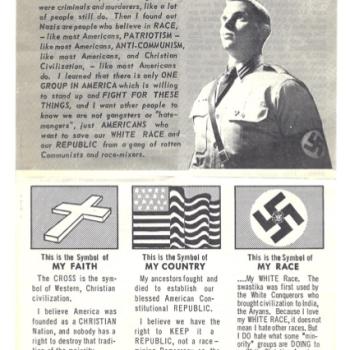The discussion around Jay Green’s piece last week is beginning to die down and Beth Barr, Kristin Du Mez and Jemar Tisby have responded in their characteristic ways. So now seems as good a time as any to add my considerations. We can consider a follow up to Joey’s recent post. My reflection, however, begins with my reaction to a book that may seem irrelevant but actually draws attention to a broader set of questions. In a nutshell, this debate made me think: who gets to tell your story? Perhaps the cardinal sin committed by Green was the failure to describe the folks named in a way that they recognized, which undermined the conclusions and the typologies themselves. But it is also not enough to describe people in a way that they recognize. One also has to, especially as a historian, consider their context. Let’s use a 20th century example.
I think of two significant books which tell the narratives of Black Christians in the early 20th century. The first is Daniel Bare’s Black Fundamentalists: Conservative Christianity and Racial Identity in the Segregation Era. As the name suggests, Bare’s book is about Black Christians who called themselves fundamentalists, aligning themselves by self-designation and by theology with white fundamentalists. The thrust of Bare’s argument is that these figures round out the history of American fundamentalism, a historiography that is overwhelmingly white. As Bare frames it, this is an attempt to tell the story of these Black fundamentalists on their own terms. Yet this is only one way of telling the story.
His book is in many ways an extension and critique of another: Doctrine and Race: African American Evangelicals and Fundamentalism Between the Wars by Mary Beth Mathews. Mathews’ subtitle subtly reveals the difference between these two works: Mathews distinguishes between Black evangelicals on one side and fundamentalists on the other not because there was no theological agreement, but because materially, fundamentalism was a racialized phenomenon. Much of the institutional fighting and building was done intentionally by white people for white people.
Why is this relevant? These two books exhibit different answers to a question that many historians face: how much does self-designation matter? On the one hand, some would say that we are to simply believe people when they describe themselves as members of a particular group. One can think of recent debates about evangelicalism and voting for Trump (were the 81% really evangelicals?). Others, however, might find reason to seek to undermine people’s claims about themselves because of the social milieu in which those claims take place. For example, I side with Mathews in saying that Black Christians who may have identified theologically with the fundamentalist movement were actually shut off from it because of its racialized nature and mobilization. So even if they called themselves fundamentalists, if white fundamentalists did not see them as “one of us”, their self-designation tells us something different. That is, it is more important to claim that it was important to Black Christians to frame themselves as fundamentalists than to say that they were fundamentalists. Sometimes people cannot see beyond their own horizons.
Which brings us back to Green’s essay. One of the frustrating elements was how limited its utility was. Tisby outlined this well in his dual focus on aligning himself with King and a particular type of “maximalism” while also rightly affirming that much of the Black ecclesial tradition would not fit. Du Mez in titling her piece, “On Why I Don’t Think I am Illiberal”, drew attention to what was most disturbing to her: that she was being framed as an authoritarian in the same vein as Christian nationalists though with apparently leftist aims. In the face of these false characterizations, my colleagues were essentially backed into a corner of defending themselves, perhaps using ways of describing themselves that they may not have originally chosen if they were allowed to do so on their own terms.
This is precisely the kind of project that keeps us from thinking deeply about political and social engagement. The tendency to think in quadrants or in strict spectrums, while it allows us to categorize one another, undermines the solidarity necessary to resist the material forces that lead to death that we are all facing. Beth Barr’s work against patriarchy, Kristin Du Mez’s scholarly work undermining the evangelical masculine industrial complex, and Jemar’s work against white supremacy are all materially grounded critiques of systems and ways of thinking that actively harm people. If we approach those things with anything less than intense energy, we do our brothers, sisters and neighbors a disservice. Categorization can serve a few purposes, but it’s most common use is to separate rather than to build solidarity.
Here is the point where I will be accused of presentism. After all, if we are investigating the past, what solidarity is there to invest in? That’s precisely the question to ask. Green ran into this issue when the examples that he gave, particularly of Emancipatory Maximalists, were exclusively current and largely based, it seems, on social media and popular presence rather than the substance of the scholarship of those described. Why do this categorization if not to encourage the reader to place themselves and those whom they know in order to understand the “sides of the debate”?
In the midst of all of these things, I have but one plea. When we see pieces like this or attempts to categorize thinkers in this way, ask the question: with whom ought I align to advance the Kingdom? Who are the suffering that I must stand alongside? Who is doing the work of undermining systems of death and bearing witness to ways of life? If all categorization does is equip us to hunker down in our echo chambers, it will drain our souls. But if it opens our eyes to history and to contexts that we may not have understood with the end goal of loving our neighbors well, then I say full steam ahead.












